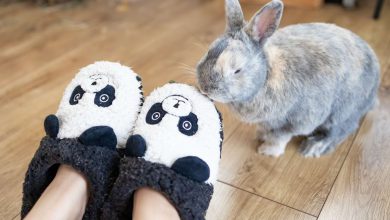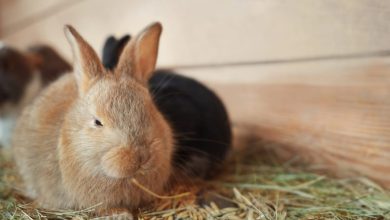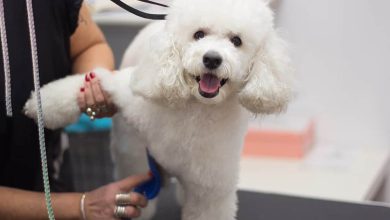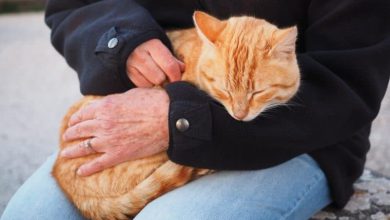Which Bedding Is Best For Pet Mice? Pros & Cons of Each
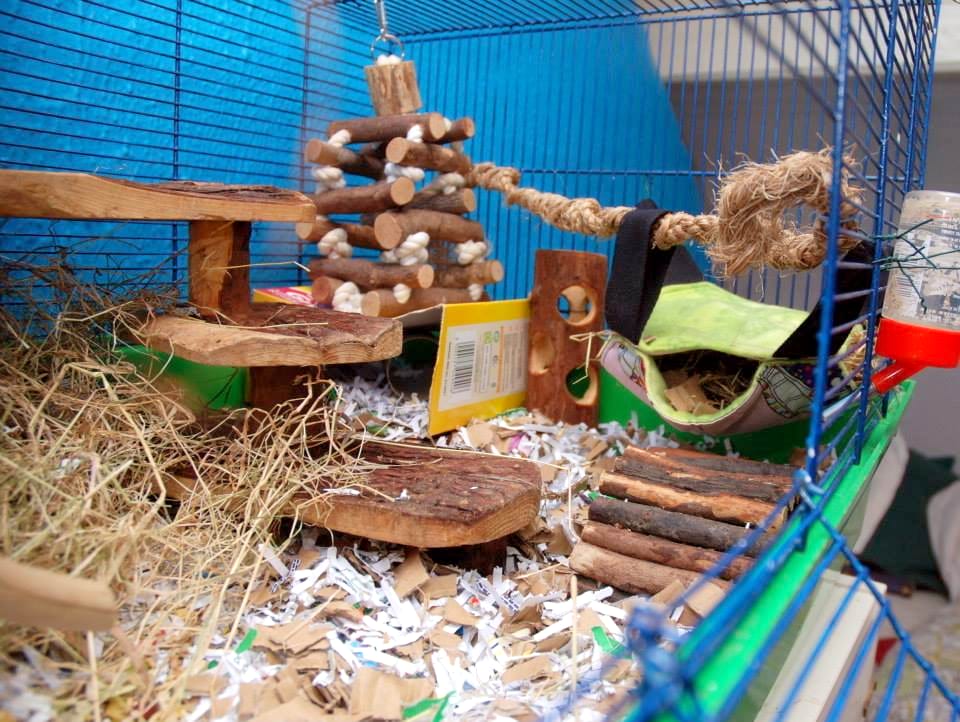
Cage bedding or substrate forms a huge part of the home environment for pet mice. So, it is really important that the bedding types we choose are safe, comfortable, and let our rodents express their natural behaviors.
The content of this article was contributed by guest author (and rodent wrangler extraordinaire) Beri Instone.
Types of Bedding That Pet Mice Need
There are three types of bedding that pet mice need:
- Substrate
- Litter
- Nesting material
Let’s go over each one.
Substrate
This is the main bedding that fills the base of the cage. It has two major purposes – it lines the cage and absorbs urine (rats and mice tend to pee where they want) which protects both the animals and the cage.
It’s important to distinguish between absorbency and drainage:
- Absorbent beddings will mop up wee, hold it so the liquid isn’t in contact with the animals, and damp down the smell.
- Beddings with good drainage, like many chicken bedding products, let the wee run to the bottom of the cage, but don’t actually soak it up, leaving the urine to pool and cause problems.
The other important use for substrate is to provide the animals with the opportunity to dig, and build tunnels and nests. This is a crucial natural behavior for mice that needs to be provided in the cage.
Rats housed in flat-based cages can be kept entertained with large digging boxes of loose substrate within the cage. However, mice really need a deep based cage with a thick layer of substrate, both because they don’t become litter trained in the way rats do, and because digging and nesting is a particularly fundamental behavior.
Litter
An unscented 100% paper cat litter placed in the cage corners where the rodents like to pee and poo is important for absorbing urine and feces. For pet rats, providing paper litter pellets in a flat or corner litter tray also encourages litter training and good toileting habits. Mice are much harder to litter train, but they do have the instinct to toilet in one place. The best bet is to work out which area of the cage they are using and put a good handful of cat litter under the substrate to improve absorbency.
It’s important to only use paper cat litter for rodents, as wood and mineral pellets break down into dust when wet and some may be unsafe if ingested (and rodents will eat their litter!)
Nesting
This is material for the animals to use in building nests and lining their sleeping areas. Mice in particular are very keen on building complex 3D nests so it is essential to give them a mixture of bedding types, including those with a longer strand length, to work with.
Paper is the most popular option. This can be tissue (paper towel or toilet roll) or ripped up newspaper. Rats aren’t fussy about how their newspaper is presented (I tend to just give them the whole sheet and they do the rest). However, mice, being smaller and wanting to build nests, prefer newspaper to be ripped up into long thin strips.
Another good option for nesting, especially for mice, are natural bedding types like hay or good quality straw (cheap cow-grade straw is too pointy). Hay in particular also adds other types of engagement to the cage. Rodents are attracted by its smell and can nibble on it, making it of more interest to interact with.
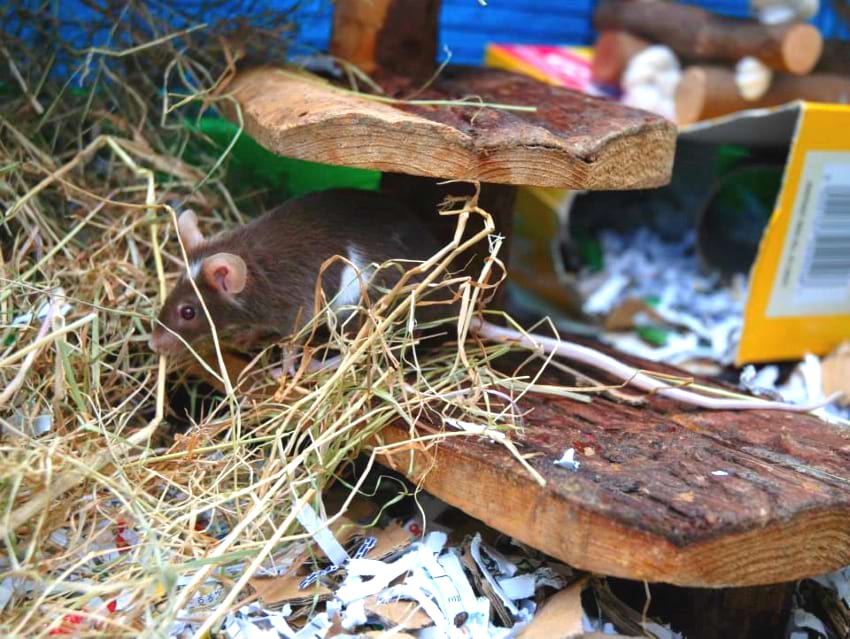
Substrate Bedding Options for Mice
Substrate is the type of bedding where owners are faced with the biggest choice and conflicting advice so let’s have a look at the options.
Cardboard Bedding
This comes as shredded cardboard strips or cardboard squares. It’s a bedding type originally developed for horses, but now also sold for small animals in many countries.
Cardboard bedding is popular as the good size pieces allow the rodents to both dig and manipulate it. There are few disadvantages, especially if it is used with another bedding from the list for complementary characteristics. However, its best to buy a good quality bedding, as some thinner types lack absorbency and will become soggy quite quickly.
Paper Bedding
Options for paper bedding have expanded in many countries in recent years with the development of purpose made substrates that are softer than paper cat litter, but more absorbent than shredded paper. (I use cross-cut shredded paper a lot to bulk out more expensive commercial bedding, but on its own it flattens out and gets stinky pretty quickly.)
Paper bedding is great for rodents and owners who have allergies to natural products, and many brands have similar advantages to cardboard bedding. However, it’s important to check your local brands out for yourself as some are scented (which can cause respiratory irritation), and some can be quite dusty.
Hemp Bedding
This has become popular recently, as an all-natural alternative to wood-shavings. There are several brands depending on where you live – I find my locally available one a bit fine, and I tend to mix it with something coarser.
This is a particularly important issue if you are buying bedding for mice or other rodents who dig tunnels, as the fine shreds collapse inwards. However, it is a nice absorbent bedding, so ideal to mix in with something with less absorbency but more structure, like cardboard. Using hemp where mice prefer to toilet can help keep litter costs down.
One thing to watch out for with hemp is that some brands add scents to it, which is bad for rodent respiratory systems. So, when buying, make sure to choose an unscented option.
Coconut Husk Bedding (Coir)
This is a product designed for reptiles, but which has gained popularity among small animal owners as another natural alternative to wood-shavings.
I am currently using a mid-sized version mixed with hemp, shredded paper, or kiln-dried shavings (see below) in my digging boxes. Some brands contain a lot of fibers, so it is worth looking closely at what you are buying and checking that they are suitable for mice.
The downside to coir is that it isn’t very absorbent (reptiles don’t pee a lot), so alone it isn’t a good bedding for temperate-adapted rodents like mice or rats. However, it is something that can be added into a mixed substrate for variety.
Wood Shavings
Are wood shavings a safe type of bedding for mice? Well, it depends on the type of shaving you are asking about.
Traditionally, shavings sold for rodents have been the cheapest quality possible – by-products of other wood industries. They were mostly made of pine or (especially in the US) cedar, had a high phenol content, and were very dusty. That made them bad for the sensitive respiratory systems of small rodents. Hard woods such as aspen, which are popular in the US, don’t contain the same levels of phenols, but low-quality products can still be dusty.

However, not all wood shavings are created equal.
In particular, wood shaving beddings designed for horses are now becoming widely available. The thing about horses is that they are as sensitive to their bedding as rodents, but they are also immensely valuable – which means the equestrian world invested in finding safe options. It was discovered that if wood shavings (including pine) are heat treated, the oily phenol content that might otherwise cause metabolic issues is reduced to negligible levels. Meanwhile, dust extraction methods enable a product that has a low dust content and is unlikely to cause respiratory irritation.
So, wood shavings can form a safe bedding for rodents as long as we buy ones that have been heat treated (e.g. kiln dried) and dust extracted.
The disadvantage of bedding designed for horses is it tends to come by the trailer load – which is slightly more than the average mouse owner needs! However, it is worth shopping around. My local independent pet shop has recently started stocking kiln-dried shavings in 20 L bags. I’ve bought a few, and so far they are a hit with the Horde.
Steer clear of:
- cheap bedding made of raw softwoods (these will often be the brands marketed for small animals),
- saw dust (too fine),
- wood chips (not absorbent enough),
You are looking for soft, good-sized flakes.
Fleece and Newspaper
Mice should always be kept on a thick layer of one or more of the loose beddings listed above. They need the absorbency and digging opportunities a well-chosen loose bedding offers.
However, many mice and rats (including my pack called the Horde) are kept in large cages with flat bases, which are not suitable for full substrate coverage. Owners with these cages have two choices:
- Build or buy a deep cage base to put substrate in (which is what I’m doing in one of my cage sections).
- Or use a flat substrate to cover the cage base, and provide large digging boxes of loose substrate for engagement.
The two materials popularly used to cover flat cage bases are fleece fabric and newspaper.
Fleece has gained a lot of popularity recently because it is washable and reusable, and many owners like the appearance. Personally, I am not a fan. The neat appearance isn’t, for me, what mice and rats are about. I like them to have the flexibility to change their environment, which includes digging and ripping up their floor covering.
Fleece also has very poor absorbency, so it smells quickly and unless it is used with something absorbent underneath (puppy pads, vetbed, or a good layer of litter), and changed very frequently, it can lead to ammonia burns or skin problems in rodents.
Newspaper also has absorbency issues, but it does have the advantage that mice and rats can rip it up into bits and do what they want with it. I use newspaper to line the flat parts of my cage where the rats are active, but not sleeping or weeing. In areas where they will be weeing, digging or sitting around, I put boxes and baskets with litter or loose substrate.
So, What’s the Best Bedding for Mice?
The best bedding for your mice will depend on the brands that are available where you live, but the principles for choosing it are universal:
- All mice need access to ample loose substrate for digging, and this should cover the cage base in a thick layer.
- Any substrate needs to be absorbent (and not just free-draining), with litter added in areas used for toileting.
- Beddings should be low in dust, free of artificial scent, and if wood-shavings are being used, they should be heat treated to remove phenols.
Often the best results can be found by mixing bedding types, to maximize the absorbency, digging options and engagement for the rodents.
